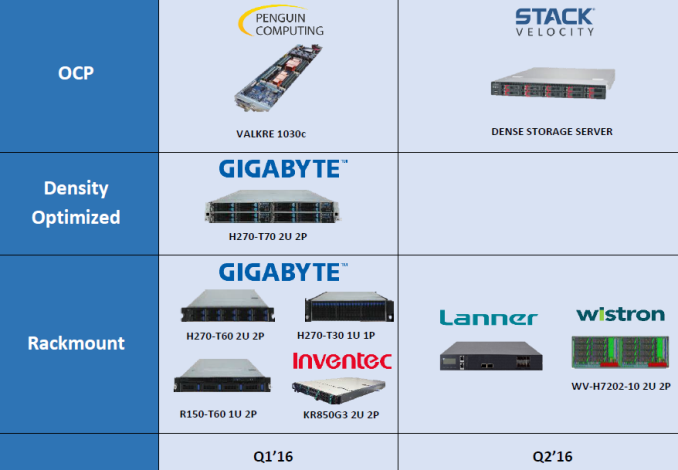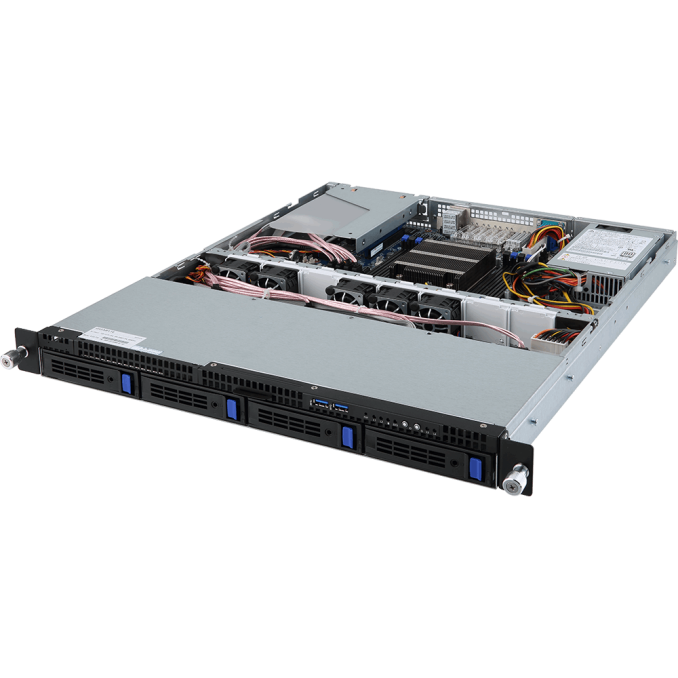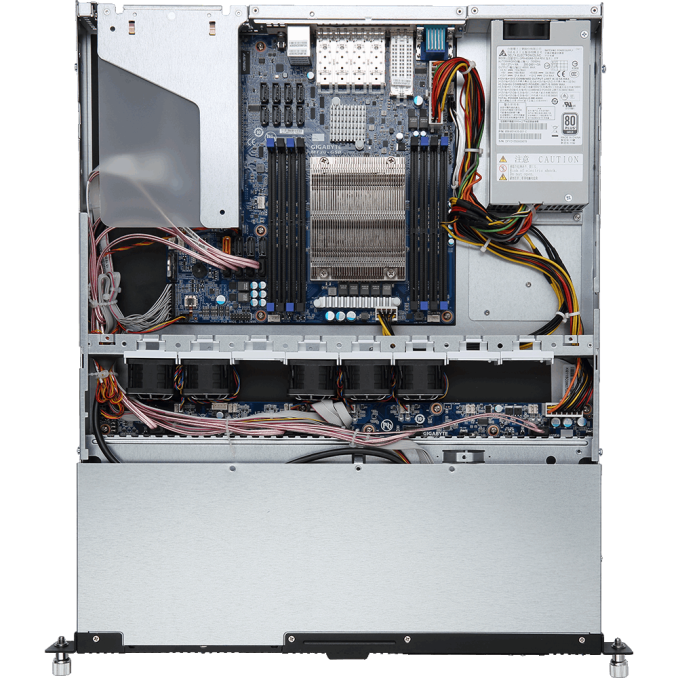Investigating Cavium's ThunderX: The First ARM Server SoC With Ambition
by Johan De Gelas on June 15, 2016 8:00 AM EST- Posted in
- SoCs
- IT Computing
- Enterprise
- Enterprise CPUs
- Microserver
- Cavium
Xeon D vs ThunderX: Supermicro vs Gigabyte
While SoC is literally stands for a system on a chip, in practice it's still just one component of a whole server. A new SoC cannot make it to the market alone; it needs the backing of server vendors to provide the rest of the hardware to go around it and to make it a complete system.
To that end, Gigabyte has adopted Cavium's ThunderX in quite a few different servers. Meanwhile on the Intel side, Supermicro is the company with the widest range of Xeon D products. 
There are other server vendors like Pengiun computing and Wistrom that will make use of the ThunderX, and you'll find Xeon D system from over a dozen vendors. But is clear that Gigabyte and Supermicro are the vendors that make the ThunderX and Xeon D available to the widest range of companies respectively.
For today's review we got access to the Gigabyte R120-T30.
Although density is important, we can not say that we are a fan of 1U servers. The small fans in those systems tend to waste a lot of energy.
Eight DIMMs allow the ThunderX SoC to offer up to 512 GB, but realistically 256 GB is probably the maximum practical capacity (8 x 32 GB) in 2016. Still, that is twice as much as the Xeon D, which can be an advantage in caching or big data servers. Of course, Cavium is the intelligent network company, and that is where this server really distinguishes itself. One Quad Small Form-factor Pluggable Plus (QFSP+) link can deliver 40 GB/s, and combined with four 10 Gb/s Small Form-factor Pluggable Plus (SFP+) links, a complete ThunderX system is good for a total of 80 Gbit per second of network bandwidth.
Along with building in an extensive amount of dedicated network I/O, Cavium has also outfit the ThunderX with a large number of SATA host ports, 16 in total. This allows you to use the 3 PCIe 3.0 x8 links for purposes other than storage or network I/O.
That said, the 1U chassis used by the R120-T30 is somewhat at odds with the capabilities of ThunderX here: there are 16 SATA ports, but only 4 hotswap bays are available. Big Data platforms make use of HDFS, and with a typical replication of 3 (each block is copied 3 times) and performance that scales well with the number of disks (and not latency), many people are searching for a system with lots of disk bays.
Finally, we're happy to report that there is no lack of monitoring and remote management capabilities. A Serial port is available for low level debugging and an AST2400 with an out of band gigabit Ethernet port allows you to manage the server from a distance.













82 Comments
View All Comments
silverblue - Thursday, June 16, 2016 - link
I'm not sure how this is relevant. Johan doesn't review graphics cards, other people at Anandtech do. I bet Guru3D has a much bigger team for that, and I imagine that they have a much narrower scope (i.e. no server stuff).I don't think I've looked at a review recently that hasn't had the comments section polluted with "where is the review for x".
UrQuan3 - Wednesday, June 15, 2016 - link
Intel allows their Xeons to sometimes pull double their TDP? No wonder our new machines trip breakers long before I thought they would. I need to test instead of assuming accurate documentation.I can see why you chose C-Ray, I'm just sorry a more general ray tracer was not chosen. Still, not it's intended market, though I am suddenly very interested. Ray-tracing and video encoding are my top two tasks.
Meteor2 - Thursday, June 16, 2016 - link
The 'T' in 'TDP' is for thermal. It's a measure of the maximum waste heat which needs to be removed over a certain period of time.UrQuan3 - Wednesday, June 22, 2016 - link
Yes, it stands for thermal, but power doesn't consumed doesn't just disappear. Convert it to light, convert it to motion, convert it to heat, etc. In this case there is a small amount of motion (electrons) and the rest has to be heat. I expect much higher instantaneous pulls, but this was sustained power. Anyway, I will track down the AVX documentation mentioned below.I saw the h264ref. I'll be curious about x264 (handbrake) as the authors seem interested in ARM in the last few years. Unsurprisingly, it is far less optimized than x64. I benchmarked handbrake on the Pi2, Pandaboard, and CI-20 last year, just to see what it would do.
JohanAnandtech - Thursday, June 16, 2016 - link
C-Ray was just a place holder to measure FPU energy consumption. I look into bringing a more potent raytracer into our benchmark suite (povray)Video encoding was in the review though, somewhat (h264ref).
patrickjp93 - Friday, June 17, 2016 - link
ARM chips with vector extensions allow it as well. Intel provides separate documentation for AVX-workload TDPs.Antony Newman - Wednesday, June 15, 2016 - link
Fascinating article.Why would Cavium not try and use 54 x A73s in their next chip?
If ARM are not in the business of making Silicon, and ARM think the '1.2W Ares' will help them break into the Server market ... Then Why do we think ARM isn't working with the likes of Cavium to get a Server SoC that rocks the Intel boat?
Typos From memory : send -> sent. Through-> thought. There were a few others.
AJ
name99 - Thursday, June 16, 2016 - link
How do you know ARM aren't working with such a vendor?ARM has always said that they expect ARM server CPUs to only be marginally competitive (for very limited situations) in 2017, and to only be really competitive in 2020.
That suggests, among other things, that if they are working with partners, they have a target launch between those two dates, and they regard all launches before 2017 as essentially nice for PR and fr building up the ecosystem, but essentially irrelevant for commercial purposes.
rahvin - Thursday, June 16, 2016 - link
The problem as pointed out early in this article is that ARM keeps targeting Intel's current products, not the ones that will be out when they get their products out. We've had almost a dozen vendors get to the point of releasing the chip and drop it because it is simply not competitive with Intel. Most of these arm products were under taken when Intel was targeting performance without regard to performance/watt. Now that intel targets the later metric arm server chips haven't been competitive with them.Fact is Intel could decimate and totally take over all the markets arm chips occupy, but to do it they'd have to cannibalize their existing high profit sales. This is why they keep canceling Atom chips, the chips turned out so good they were worried they'd cannibalize much more expensive products. This is the reason Avoton is highly restricted in what products and price segments it's allowed into. If Intel opened the flood gates on Avoton they would risk cannibalizing their own server profits.
junky77 - Wednesday, June 15, 2016 - link
So, they did what AMD couldn't for years? I'm trying to figure it out.. their offering seems to be a lot more interesting than AMD's stuff currently